If We Could Squeeze A Galaxy, It Would Be This Fluffy-looking One.

If we could squeeze a galaxy, it would be this fluffy-looking one.
Spiral galaxies like this, located 60 million light-years away, have supermassive black holes at their bright centers. Astronomers are trying to understand this cozy relationship.
Make sure to follow us on Tumblr for your regular dose of space: http://nasa.tumblr.com.
More Posts from Nasa and Others

#TBT to 1989 when Voyager 2 spotted Uranus looking like a seemingly perfect robin’s egg. 💙 When our Voyager 2 spacecraft flew by it in this image, one pole was pointing directly at the Sun. This means that no matter how much it spins, one half is completely in the sun at all times, and the other half is in total darkness.. Far-flung, Uranus – an ice giant of our solar system – is as mysterious as it is distant. Soon after its launch in 2021, our James Webb Space Telescope will change that by unlocking secrets of its atmosphere. Image Credit: NASA/JPL-Caltech
Make sure to follow us on Tumblr for your regular dose of space: http://nasa.tumblr.com
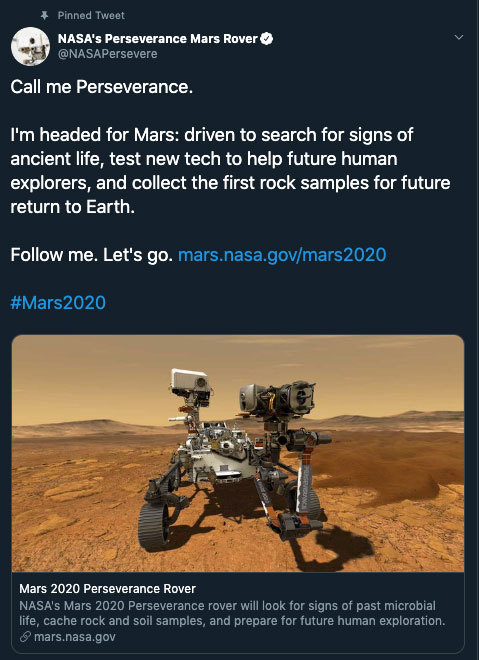
Allow us to reintroduce someone ... the name’s Perseverance.
With this new name, our Mars 2020 rover has now come to life! Chosen by middle school student Alex Mather, Perseverance helps to remind ourselves that no matter what obstacles we face, whether it's on the way to reaching our goals or on the way to Mars, we will push through. In Alex’s own words,
“We are a species of explorers, and we will meet many setbacks on the way to Mars. However, we can persevere. We, not as a nation but as humans, will not give up. The human race will always persevere into the future.”
Welcome to the family. ❤️
Make sure to follow us on Tumblr for your regular dose of space: http://nasa.tumblr.com.
What ways were used to determine all of the inner workings under our planet Earth’s surface?
Space Telescope Gets to Work
Our latest space telescope, Transiting Exoplanet Survey Satellite (TESS), launched in April. This week, planet hunters worldwide received all the data from the first two months of its planet search. This view, from four cameras on TESS, shows just one region of Earth’s southern sky.

The Transiting Exoplanet Survey Satellite (TESS) captured this strip of stars and galaxies in the southern sky during one 30-minute period in August. Created by combining the view from all four of its cameras, TESS images will be used to discover new exoplanets. Notable features in this swath include the Large and Small Magellanic Clouds and a globular cluster called NGC 104. The brightest stars, Beta Gruis and R Doradus, saturated an entire column of camera detector pixels on the satellite’s second and fourth cameras.
Credit: NASA/MIT/TESS
The data in the images from TESS will soon lead to discoveries of planets beyond our solar system – exoplanets. (We’re at 3,848 so far!)

But first, all that data (about 27 gigabytes a day) needs to be processed. And where do space telescopes like TESS get their data cleaned up? At the Star Wash, of course!

TESS sends about 10 billion pixels of data to Earth at a time. A supercomputer at NASA Ames in Silicon Valley processes the raw data, turning those pixels into measures of a star’s brightness.

And that brightness? THAT’S HOW WE FIND PLANETS! A dip in a star’s brightness can reveal an orbiting exoplanet in transit.

TESS will spend a year studying our southern sky, then will turn and survey our northern sky for another year. Eventually, the space telescope will observe 85 percent of Earth’s sky, including 200,000 of the brightest and closest stars to Earth.

Make sure to follow us on Tumblr for your regular dose of space: http://nasa.tumblr.com
Record-Shattering Global Warm Temperatures in 2015
Earth’s 2015 surface temperatures were the warmest since modern record keeping began in 1880, according to independent analyses by NASA and the National Oceanic and Atmospheric Administration (NOAA).

Globally-averaged temperatures in 2015 shattered the previous mark set in 2014 by 0.23 degrees Fahrenheit (0.13 Celsius). Only once before, in 1998, has the new record been greater than the old record by this much.
The 2015 temperatures continue a long-term warming trend, according to analyses by scientists at NASA’s Goddard Institute for Space Studies (GISS) in New York. NOAA scientists concur with the finding that 2015 was the warmest year on record based on separate, independent analyses of the data.

Since the late-19th century, the planet’s average surface temperature has risen about 1.8 degrees Fahrenheit. This change is largely driven by increased carbon dioxide and other human-made emissions into the atmosphere.
An important thing to remember when reading this information is that it reflects global temperature average. That means that specific regions or areas could have experienced colder weather than usual, but overall the global temperature has risen.

How do we know? Our analyses incorporate surface temperature measurements from 6,300 weather stations, ship-and buoy-based observations of sea surface temperatures, and temperature measurements from Antarctic research stations.
What about El Niño? Phenomena such as El Niño or La Niña, which warm or cool the tropical Pacific Ocean, can contribute to short-term variations in global average temperature. Last year’s temperatures had an assist from a warming El Niño, but it is the cumulative effect of the long-term trend that has resulted in the record warming that we’re seeing.
The full 2015 surface temperature data set and the complete methodology used to make the temperature calculation are available HERE.
Make sure to follow us on Tumblr for your regular dose of space: http://nasa.tumblr.com
Why Webb Needs to Chill
Our massive James Webb Space Telescope just recently emerged from about 100 days of cryogenic testing to make sure it can work perfectly at incredibly cold temperatures when it’s in deep space.

How cold did it get and why? Here’s the whole scoop...
Webb is a giant infrared space telescope that we are currently building. It was designed to see things that other telescopes, even the amazing Hubble Space Telescope, can’t see.

Webb’s giant 6.5-meter diameter primary mirror is part of what gives it superior vision, and it’s coated in gold to optimize it for seeing infrared light.

Why do we want to see infrared light?
Lots of stuff in space emits infrared light, so being able to observe it gives us another tool for understanding the universe. For example, sometimes dust obscures the light from objects we want to study – but if we can see the heat they are emitting, we can still “see” the objects to study them.
It’s like if you were to stick your arm inside a garbage bag. You might not be able to see your arm with your eyes – but if you had an infrared camera, it could see the heat of your arm right through the cooler plastic bag.

Credit: NASA/IPAC
With a powerful infrared space telescope, we can see stars and planets forming inside clouds of dust and gas.

We can also see the very first stars and galaxies that formed in the early universe. These objects are so far away that…well, we haven’t actually been able to see them yet. Also, their light has been shifted from visible light to infrared because the universe is expanding, and as the distances between the galaxies stretch, the light from them also stretches towards redder wavelengths.
We call this phenomena “redshift.” This means that for us, these objects can be quite dim at visible wavelengths, but bright at infrared ones. With a powerful enough infrared telescope, we can see these never-before-seen objects.

We can also study the atmospheres of planets orbiting other stars. Many of the elements and molecules we want to study in planetary atmospheres have characteristic signatures in the infrared.

Because infrared light comes from objects that are warm, in order to detect the super faint heat signals of things that are really, really far away, the telescope itself has to be very cold. How cold does the telescope have to be? Webb’s operating temperature is under 50K (or -370F/-223 C). As a comparison, water freezes at 273K (or 32 F/0 C).
How do we keep the telescope that cold?
Because there is no atmosphere in space, as long as you can keep something out of the Sun, it will get very cold. So Webb, as a whole, doesn’t need freezers or coolers - instead it has a giant sunshield that keeps it in the shade. (We do have one instrument on Webb that does have a cryocooler because it needs to operate at 7K.)

Also, we have to be careful that no nearby bright things can shine into the telescope – Webb is so sensitive to faint infrared light, that bright light could essentially blind it. The sunshield is able to protect the telescope from the light and heat of the Earth and Moon, as well as the Sun.

Out at what we call the Second Lagrange point, where the telescope will orbit the Sun in line with the Earth, the sunshield is able to always block the light from bright objects like the Earth, Sun and Moon.

How do we make sure it all works in space?
By lots of testing on the ground before we launch it. Every piece of the telescope was designed to work at the cold temperatures it will operate at in space and was tested in simulated space conditions. The mirrors were tested at cryogenic temperatures after every phase of their manufacturing process.

The instruments went through multiple cryogenic tests at our Goddard Space Flight Center in Maryland.

Once the telescope (instruments and optics) was assembled, it even underwent a full end-to-end test in our Johnson Space Center’s giant cryogenic chamber, to ensure the whole system will work perfectly in space.

What’s next for Webb?
It will move to Northrop Grumman where it will be mated to the sunshield, as well as the spacecraft bus, which provides support functions like electrical power, attitude control, thermal control, communications, data handling and propulsion to the spacecraft.

Learn more about the James Webb Space Telescope HERE, or follow the mission on Facebook, Twitter and Instagram.
Make sure to follow us on Tumblr for your regular dose of space: http://nasa.tumblr.com.
What’s Up for November 2016
What’s Up for November: Venus at sunset, Jupiter at dawn, your last evening glimpse of Saturn until spring, and more meteors!

Through November 3, catch glimpses of a gibbous Venus, a crescent moon and ringed Saturn in the southwest sky just after sunset.

Wake up before sunrise every day this month to see Jupiter just above Spica, the brightest star in the constellation Virgo, shining in the east-southeast sky.
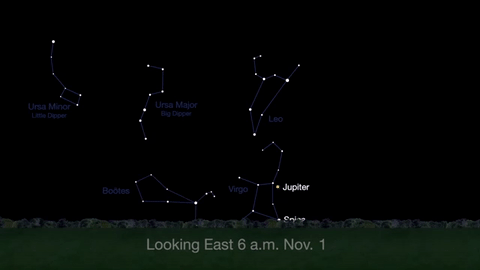
Just before dawn on November 23-24, see the waning crescent moon just above Jupiter.
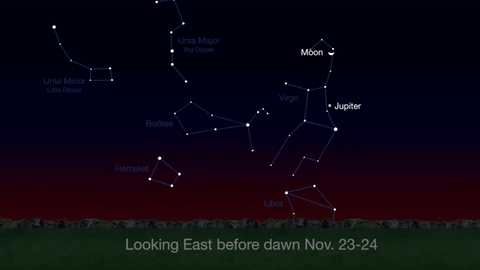
November is a great time to see the constellation Ceres as it glides past Cetus, the Whale and you will be able to see the dwarf planet move relative to the background stars, but you’ll need a telescope for this one.
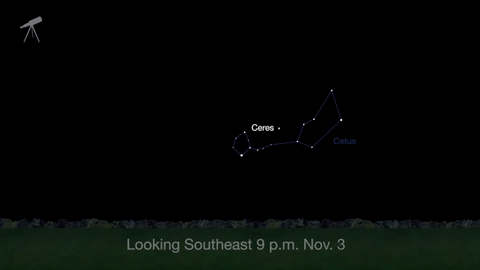
This month, just like last month, there will be three meteor showers--the Northern Tuarids, the Leonids and the November Orionids.
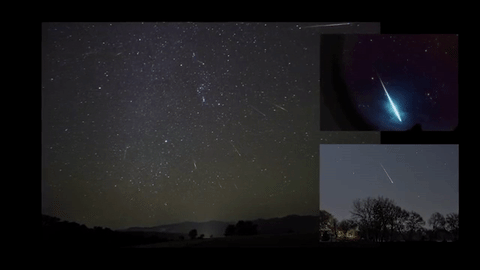
Watch the full November “What’s Up" video for more:
Make sure to follow us on Tumblr for your regular dose of space: http://nasa.tumblr.com.
Take Your GIF Game to Cosmic Levels & React Like a NASA Astronaut!
We partnered with GIPHY to help take your GIF game to cosmic levelssss. As the Artemis generation who will witness a whole new era of space travel, we wanted make sure you could express yourself... like an astronaut!
So, if you want to show some love...

... or you’re pumped we’re half way to Friday ...

We’ve got you covered.
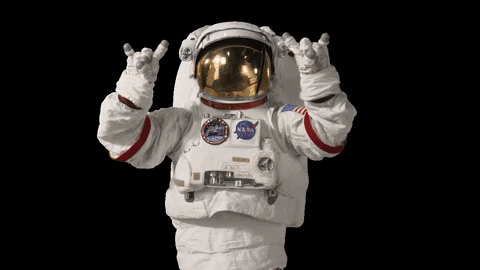
Don’t miss our whole collection of astronaut reactions!
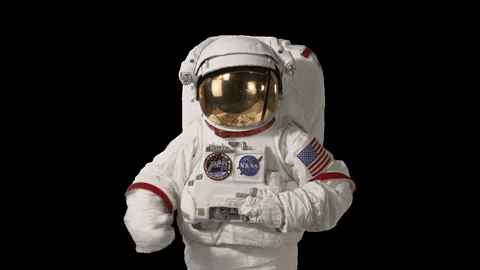
Want to use them on your device?

Type ‘NASAReaction’ in your device’s GIPHY keyboard...

.... and choose your favorite!

You can access our full collection of official NASA astronaut GIFs by visiting: https://giphy.com/nasa/reaction-pack
Make sure to follow us on Tumblr for your regular dose of space: http://nasa.tumblr.com
Celestial Valentine’s Day Cards
Looking for a last minute Valentine’s Day card? Here are some out-of-this-world options for you:
From our solar system…





To distant galaxies…


And worlds far, far away…


Share your Valentine’s Day love with these celestial cards.
To find even more options, visit:
XO Travel Bureau: https://exoplanets.nasa.gov/galleries/exoplanet-travel-bureau/ Mars Valentine’s: http://mars.nasa.gov/free-holiday-ecard/love-valentine/ Space Place Valentine’s: http://spaceplace.nasa.gov/valentines/en/ OSIRIS-REx Valentine’s: http://www.asteroidmission.org/galleries/#collectables
Make sure to follow us on Tumblr for your regular dose of space: http://nasa.tumblr.com
When sending experiments to space, what is the most unexpected thing you have to think about? Like you're probably have to consider things like radiation damage, but what is something that isn't an immediately obvious issue that you have to account for?
-
 stardating reblogged this · 2 years ago
stardating reblogged this · 2 years ago -
 isla-vic liked this · 3 years ago
isla-vic liked this · 3 years ago -
 starstruckcomicsanimeoperator liked this · 4 years ago
starstruckcomicsanimeoperator liked this · 4 years ago -
 steve51world liked this · 4 years ago
steve51world liked this · 4 years ago -
 beardog1079 liked this · 4 years ago
beardog1079 liked this · 4 years ago -
 puffydearlysmith liked this · 4 years ago
puffydearlysmith liked this · 4 years ago -
 usafphantom2 reblogged this · 4 years ago
usafphantom2 reblogged this · 4 years ago -
 usafphantom2 liked this · 4 years ago
usafphantom2 liked this · 4 years ago -
 sociallyawkwardbirb liked this · 4 years ago
sociallyawkwardbirb liked this · 4 years ago -
 gardengoblin115 liked this · 4 years ago
gardengoblin115 liked this · 4 years ago -
 farawayleaf liked this · 4 years ago
farawayleaf liked this · 4 years ago -
 keeponmovingss liked this · 4 years ago
keeponmovingss liked this · 4 years ago -
 rotandfilth liked this · 4 years ago
rotandfilth liked this · 4 years ago -
 gallifrayenhistorysection reblogged this · 4 years ago
gallifrayenhistorysection reblogged this · 4 years ago -
 thelibrarianxhes liked this · 4 years ago
thelibrarianxhes liked this · 4 years ago -
 a-nightmare-to-the-eyes reblogged this · 4 years ago
a-nightmare-to-the-eyes reblogged this · 4 years ago -
 mayax81 reblogged this · 4 years ago
mayax81 reblogged this · 4 years ago -
 mayax81 liked this · 4 years ago
mayax81 liked this · 4 years ago -
 renjunniesmoomin liked this · 4 years ago
renjunniesmoomin liked this · 4 years ago -
 wolfsong-the-bloody-beast reblogged this · 4 years ago
wolfsong-the-bloody-beast reblogged this · 4 years ago -
 originalroadtreepeanut-blog liked this · 4 years ago
originalroadtreepeanut-blog liked this · 4 years ago -
 crookedgladiatorlover liked this · 4 years ago
crookedgladiatorlover liked this · 4 years ago -
 internetfriend-moved liked this · 4 years ago
internetfriend-moved liked this · 4 years ago -
 zeonxox liked this · 4 years ago
zeonxox liked this · 4 years ago -
 mister-dungus reblogged this · 4 years ago
mister-dungus reblogged this · 4 years ago -
 mister-dungus liked this · 4 years ago
mister-dungus liked this · 4 years ago -
 brightestofcentaurus reblogged this · 4 years ago
brightestofcentaurus reblogged this · 4 years ago -
 jennadyj liked this · 4 years ago
jennadyj liked this · 4 years ago -
 arialis reblogged this · 4 years ago
arialis reblogged this · 4 years ago -
 quite-queer-poet-blog liked this · 5 years ago
quite-queer-poet-blog liked this · 5 years ago -
 nxvatines liked this · 5 years ago
nxvatines liked this · 5 years ago -
 kittylilyheart liked this · 5 years ago
kittylilyheart liked this · 5 years ago -
 sunnycosmology liked this · 5 years ago
sunnycosmology liked this · 5 years ago -
 likethatbitchh liked this · 5 years ago
likethatbitchh liked this · 5 years ago -
 sweethal liked this · 5 years ago
sweethal liked this · 5 years ago -
 bluehah reblogged this · 5 years ago
bluehah reblogged this · 5 years ago -
 kirankhr liked this · 5 years ago
kirankhr liked this · 5 years ago -
 intj-bitch liked this · 5 years ago
intj-bitch liked this · 5 years ago -
 effervescentrips reblogged this · 5 years ago
effervescentrips reblogged this · 5 years ago -
 venit0s liked this · 5 years ago
venit0s liked this · 5 years ago
Explore the universe and discover our home planet with the official NASA Tumblr account
1K posts